All Subjects

AP World DBQ Outline + Thesis Practice with Feedback
5 min read • july 11, 2024
Melissa Longnecker
Eric Beckman
Evan Liddle
DBQ Practice is very important when preparing for the AP World exam. It is recommended to write a short brief outline of your argument before writing your body paragraph.
Your task: In 20 minutes or less , read the documents and:
- Outline arguments you would make, using LESS than a full sentence for each
- List, but DO NOT describe, evidence, both documents and outside evidence
- Write a thesis based on these argumentsNote: on the actual exam spending more than 20 minutes on this will not leave you with enough time to complete what you plan
DBQ Revolutions in Americas Prompt
Use these documents to answer the following prompt:
Develop an argument that evaluates the extent to which revolutions in the Americas between c. 1770 - c. 1825 successfully challenged social hierarchies.
Outlines and Feedback
Thesis and outline practice submission 1.
Thesis: Although the revolutions in the Americas themselves were successful, they did not successfully challenge social hierarchies because the lower class people including the Black and mixed races and the slaves still dealt with prejudice and the Whites stayed in power. However, there was some successful social hierarchy change for the Whites because a new class of Whites did gain more political power.
- Lower classes and Prejudice continued: Doc 2, Doc 4 (Only Creoles benefited, slavery continued) Doc 5
- White Creoles gained power: Doc 3 (Bolivar was a Creole, Hidalgo and Mexican Revolution)
- But, still great divisions among social classes–> underdevelopment + neocolonialism (My thesis starts with “although” but that was not what I was trying to set up the complexity with. Would I still need to prove that the revolutions themselves were successful? If so, I would use doc 1 for that).
DBQ Teacher Feedback
A way to improve your thesis would be to indicate a specific revolution which corresponds to your description. As for your question, abut complexity, that nuance could contribute to complexity but that itself is not complexity. Overall your structure looks good to me, but for your first paragraph you could be a bit more narrow. Prejudice against the lower classes? Race or labor based prejudice? Narrow that down.
Thesis and Outline Practice Submission 2
Revolutions in the Americas that took place from 1770 - 1825 were generally extremely successful at challenging established social hierarchies, as they diminished the power of traditional elites and led to the liberation of formerly enslaved peoples, mainly African Americans and their descendants. However, In some areas such as Latin America, the new elites that arose from revolutions to replace the old, leaving the rest of the social hierarchy intact.
- Diminished Power of Elites: Doc 5, Doc 3, American Revolution (Freedom from Monarchy), French Revolution
- Freed Enslaved People: Doc 1, Doc 2, Haitian Revolution
- Social Hierarchy Intact: Doc 4, Creole Revolutions (Creole replace Peninsulares)
Your thesis is sufficient. If you want to make it better you could consider using hedging and qualified language such as the types of hierarchies reinforced/challenged (Labor, race, class). Your essay structure looks fine, but if you are running out of time consider combining paragraphs 1 and 2. Hope this helps keep practicing.
Thesis and Outline Practice Submission 3
Thesis: Although revolutions ranging from 1770-1825, made a profound effect on social hierarchies at the time through freedom of slaves and the destruction of monarchies in Britain, they did not last for the long term in most regions such as Latin America as the continuance of racism towards people of dark skin and harsh as well as inconsiderate ruling dominated these new changes.
- Freedom of slaves: 1, 2
- Destruction of monarchies: 3
- Continued racism: 4
- Continuance of harsh/inconsiderate ruling: 5 Could my complexity have to do something with racism still persisting in modern-day or would that not give me the point?
This thesis does a good job setting up your claim (the word “profound” works well here) and your line of reasoning. It’s clear what you plan to develop for your argument in your body paragraphs.
As you practice with DBQs, consider how you might bring documents together in your body paragraphs. This outline works, but a stronger (and easier to write) outline might find ways to bring documents together under a common argument and keep your overall essay to just 2 body paragraphs.
Complexity isn’t about bringing in modern examples necessarily. That skill point is about developing a complex argument throughout the whole essay. Think about how you could connect all of your ideas together throughout the paragraphs and fully explain your ideas. That will get you closer on many points, whether or not it earns that one complexity point.
Thesis and Outline Practice Submission 4
Thesis: Although the revolutions in the Americas successfully overthrew the direct rule of the European monarchies and led to an emergence of creoles who came to power, social inequality still plague the lower class peoples of the newly liberated nations and the obstacles of forming a fair government amidst the grievances of the mixed race and indigenous people did not greatly contribute to change the preexisting social structures.
- Social inequality: Docs 2,4; continued to enslave African Americans in North America
- Obstacles of forming a fair of government: Doc 5; instability and poor governance=poverty and economy dependent on former colonizer countries
- Creoles gaining power: Docs 1,3; Simon Bolivar, Jose de San Martin And also, are there more than one definitive, and correct answer to this prompt? I’m worried about misinterpreting the documents on the exam, thus leading to a non-historically defensible essay.
To start, I’ll address your question. Yes, there are multiple correct answers to this prompt (and any DBQ). The questions and document sets are designed to allow students to successfully defend any of a variety of claims. If your claim fits with your knowledge of history AND your understanding of the documents, it will likely count as “historically defensible.” (Basically, don’t stress it - you’ve got this!)
This is a really sophisticated thesis that addresses both political and social ideas. It looks like you know that to make the political/governance stuff work, you’ll need to connect it to social hierarchies. Good work.
I’m glad to see your body paragraphs include multiple documents. That’s the fastest/easiest way to be sure that you’re using them and actually developing an argument. Keep it up!
© 2024 Fiveable Inc. All rights reserved.
Ap® and sat® are trademarks registered by the college board, which is not affiliated with, and does not endorse this website..
AP World History: Modern Exam Tips
Keep an eye on your time..
Monitor your time carefully. Make sure not to spend too much time on any one question so that you have enough time to answer all of them. If you reach the end of the test with time to spare, go back and review your essays. And don’t waste time restating the question in your answers: that won’t earn points.
Plan your answers.
Don’t start to write immediately: that can lead to a string of disconnected, poorly planned thoughts. Carefully analyze the question, thinking through what is being asked and evaluating the points of view of the sources and authors. Identify the elements that must be addressed in the response. For example, some questions may require you to consider the similarities between people or events, and then to think of the ways they are different. Others may ask you to develop an argument with examples to support it. Be sure to answer exactly what is being asked in the question prompt!
Integrate evidence.
After you have determined how to answer the question, consider what evidence you can incorporate into your response. Review the evidence you learned during the year that relates to the question and then decide how it fits into the analysis. Does it demonstrate a similarity or a difference? Does it argue for or against a generalization that is being addressed?
Decide your thesis statement.
Begin writing only after you have thought through your evidence and have determined what your thesis statement will be. Once you have done this, you will be in a position to answer the question analytically instead of in a rambling narrative.
Support your thesis statement.
Make your overarching statement or argument, then position your supporting evidence so that it is obviously directed to answering the question. State your points clearly and explicitly connect them to the larger thesis, rather than making generalizations.
Elaborate on the evidence.
Don’t just paraphrase or summarize your evidence. Clearly state your intent, then use additional information or analysis to elaborate on how these pieces of evidence are similar or different. If there is evidence that refutes a statement, explain why. Your answer should show that you understand the subtleties of the questions.
Answering free-response questions from previous AP Exams is a great way to practice: it allows you to compare your own responses with those that have already been evaluated and scored. Go to the Exam Questions and Scoring Information section of the AP World History: Modern Exam page on AP Central to review the latest released free-response questions and scoring guidelines. Older questions and scoring information are available on the Past Exam Questions page.
Pay close attention to the task verbs used in the free-response questions. Each one directs you to complete a specific type of response. Here are the task verbs you’ll see on the exam:
- Compare: Provide a description or explanation of similarities and/or differences.
- Describe: Provide the relevant characteristics of a specified topic.
- Evaluate: Judge or determine the significance or importance of information, or the quality or accuracy of a claim.
- Explain: Provide information about how or why a relationship, process, pattern, position, situation, or outcome occurs, using evidence and/or reasoning; explain “how” typically requires analyzing the relationship, process, pattern, position, situation, or outcome; whereas, explain “why” typically requires analysis of motivations or reasons for the relationship, process, pattern, position, situation, or outcome.
- Identify: Indicate or provide information about a specified topic, without elaboration or explanation.
- Support an argument: Provide specific examples and explain how they support a claim.
AP Short-Answer Response Booklets
Important reminders for completing short-answer responses.
Write each response only on the page designated for that question.
- 1 lined page is provided for each short-answer question.
- The question number is printed as a large watermark on each page, and also appears at the top and bottom of the response area.
Keep responses brief–don’t write essays.
- The booklet is designed to provide sufficient space for each response.
- Longer responses will not necessarily receive higher scores than shorter ones that accomplish all the tasks set by the question.
See a diagram that shows you where to find the question number on pages in the response booklet.

AP® US History
Ensuring your students earn the contextualization point on the dbq.
- The Albert Team
- Last Updated On: March 1, 2022

The redesign has brought a great deal of uncertainty and confusion amongst APUSH teachers. In many ways, we are all “rookie” teachers, as all of us have the challenge of implementing fundamental curricular and skills-based changes into our classrooms.
One of the more significant changes is to the structure of one essay on the AP® exam, the Document Based question (DBQ). The rubric for the DBQ was previously a more holistic essay that combined a strong thesis, and use of documents and outside information to support the argument. This has been transformed into a much more structured and formulaic skills-based rubric. The change has led to a healthy debate about the pros and cons of both types of essays, but in general the core of the essay has remained the same: write a thesis and support it with evidence in the form of documents and outside information. If students continue to apply these basic writing skills, they are likely to earn 3 or 4 out of the seven total points for the Document Based Question .
In this post, we will explore one of these points students will be looking to earn to help their chances at passing the APUSH exam this May: the Contextualization point.
What is Contextualization?
According to the College Board, contextualization refers to a:
Historical thinking skill that involves the ability to connect historical events and processes to specific circumstances of time and place as well as broader regional, national, or global processes. ( College Board AP® Course and Exam Description, AP® US History, Fall 2015 )
Contextualization is a critical historical thinking skill that is featured in the newly redesigned course. In my opinion, this is a skill of fundamental importance for students to utilize in the classroom. Often times, students find history difficult or boring because they don’t see connections between different historical time periods and the world they live in today. They assume that events occur in a vacuum, and don’t realize that the historical context is critical in helping explain people’s beliefs and points of view in that period of time. Putting events into context is something I always thought was important, but now that the College Board explicitly has established the skill, it has forced me to be more proactive in creating lessons and assignments that allow students to utilize this way of thinking.
The place that contextualization is most directly relevant on the actual AP® exam itself is the Document Based Question. In order to earn the point for contextualization, students must:
Situate historical events, developments, or processes within the broader regional, national, or global context in which they occurred in order to draw conclusions about their relative significance. (College Board AP® Course and Exam Description, AP® US History, Fall 2015)
In other words, students are asked to provide background before jumping right into their thesis and essay and paint a picture of what is going on at the time of the prompt. Although there is no specific requirement as to where contextualization should occur, it makes natural sense to place it in the introduction right before a thesis point. Placing this historical background right at the beginning sets the stage for the argument that will occur in the body of the essay, and is consistent with expectations many English teachers have in how to write an introduction paragraph.
I explain contextualization to students by using the example of Star Wars. Before the movie starts, the film begins with “A long time ago in a galaxy far, far away…” and continues with background information on the characters, events, and other information that is crucial to understanding the film. Without this context, the viewer would not know what is going on, and might miss key events or be lost throughout the film. This is what contextualization aims to do in student essays. It sets the stage for their thesis, evidence, and argument that is to follow.
Contextualization vs. Historical Context
One aspect of the DBQ rubric that can be a bit confusing initially is that students are asked to do this contextualization, but there is also another area which gives them the option to use historical context. So what is the difference?
Contextualization refers to putting the entire essay into a broader context (preferably in the introduction). However, when writing their essays, students are also required to analyze four of the documents that they utilize by either examining the author’s point of view, describing the intended audience of the source, identifying the author’s purpose or putting the source into historical context. The latter sounds similar to contextualization (and it is essentially the same skill), but historical context is only focused on the specific document being analyzed, not the entire essay, like the contextualization point. For example, if a document is a map that shows slavery growing dramatically from 1820 to 1860, a student might point out that this growth can be explained in the context of the development of the cotton gin, which made the production of cotton much more profitable and let to the spread of slavery in the Deep South. While essentially the same skill, historical context focuses on one specific document’s background.
Examples of Successful Student Contextualization Points
One of the biggest pitfalls that prevent students from earning the contextualization point is that they are too brief or vague. In general, it would be difficult for students to earn the point if they are writing only a sentence or two. Early in the year, I assigned students a DBQ based on the following prompt:
Evaluate the extent in which the Civil War was a turning point in the lives of African Americans in the United States. Use the documents and your knowledge of the years 1860-1877 to construct your response.
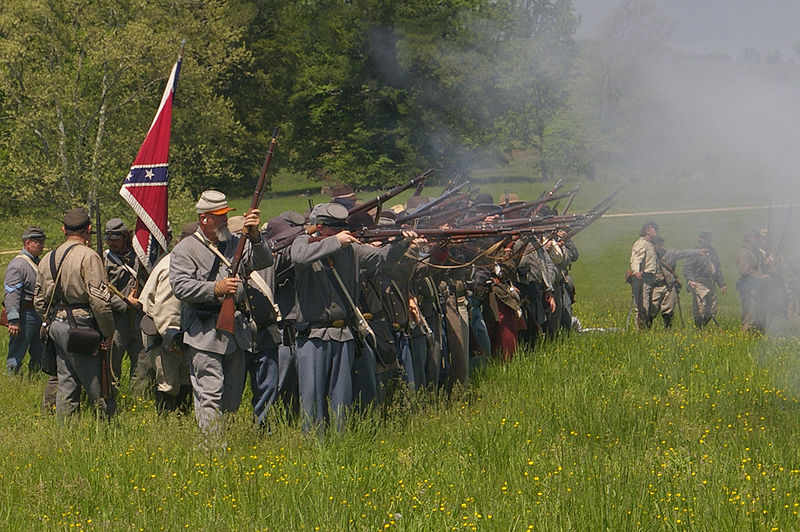
This was the third DBQ we had written, and students were now getting brave enough to move beyond a thesis and document analysis and started attempting to tackle the contextualization point. However, the attempts were all over the map. One student wrote:
The Civil War was a bloody event that led to the death of thousands of Americans.
Of course this is a true statement, but is extremely vague. What led to the Civil War? Why was it so deadly? Without any specific detail, this student could not earn the contextualization point.
Another student wrote:
Slavery had existed for hundreds of years in the United States. It was a terrible thing that had to be abolished.
Again, this is a drive-by attempt at earning contextualization. It mentions things that are true, but lacks any meaningful details or explanation that would demonstrate understanding of the time period in discussion. What led to the beginning of slavery in the colonies? How did it develop? What made it so horrible? How did individuals resist and protest slavery? These are the types of details that would add meaning to contextualization.
One student nailed it. She wrote:
The peculiar institution of slavery had been a part of America’s identity since the founding of the original English colony at Jamestown. In the early years, compromise was key to avoiding the moral question, but as America entered the mid 19th century sectional tensions and crises with popular sovereignty, Kansas, and fugitive slaves made the issue increasingly unavoidable. When the Civil War began, the war was transformed from one to simply save the Union to a battle for the future of slavery and freedom in the United States.
Now THAT is contextualization! It gives specific details about the beginning of slavery and its development. It discusses attempts at compromise, but increasing sectional tensions that led to the Civil War. The writer paints a vivid and clear picture of the situation, events, and people that set the stage for the Civil War. Students don’t want to write a 6-8 sentence paragraph (they will want to save time for their argument in the body), but they need to do more than write a vague sentence that superficially addresses the era.
Strategies for Teaching Contextualization to Students
Analyze Lots of Primary Sources One of the best ways to prepare for the DBQ is for students to practice reading and comprehending primary source texts, particularly texts that are written by people who use very different language and sentence structure from today. This helps them understand and analyze documents, but it also can be helpful in practicing contextualization. Looking at different perspectives and points of view in the actual historical time periods they are learning is key in allowing students to understand how the era can impact beliefs, values and events that occur.
Assign Many DBQ Assessments and Share Specific Examples The more often students write DBQs, the more comfortable students will get with the entire process and skill set involved, including contextualization. One thing that has been especially successful in my classroom is to collect a handful of student attempts at the contextualization point and share them with students. Students then get to examine them and look at effective and less effective attempts at earning contextualization. Often the best way for students to learn what to do or how to improve is to see what their classmates have done.
Incorporating In-Class Activities The course is broken into nine distinct time periods from 1491 to present. In each period or unit students are assigned activities that force them to put a specific policy, event, or movement into context. For example, we did lecture notes on the presidency of JFK, learning about the Man on the Moon Speech, Cuban Missile Crisis, and creation of the Peace Corps. Students had to write 3-4 sentences that asked them to put these events in historical context using the Cold War. This allowed students to understand that each of these seemingly unrelated historical events were shaped by the tension between the United States and Soviet Union: winning the space race, stopping a communist nuclear threat less than 100 miles from Florida, and spreading goodwill into nations that might otherwise turn to communism all are strategies the United States used to thwart the Soviet threat. By doing this activity, students gain an appreciation for how historical context shapes events and decisions of the day.

Teach Cause and Effect in United States History It is very easy to get caught up as a teacher in how to best get lots of minutia and factoids into students heads quickly and efficiently. However, if we can teach history not as a series of independent and unrelated events, but as a series of events that have a causal relationship that impact what happens next, this helps students grasp and understand contextualization. For example, in the lead-up to World War I, students create a timeline of events that led to America entering the conflict. As students examine the torpedoing of the Lusitania, unrestricted submarine warfare, the Zimmermann telegram, etc., they gain an understanding that it was not a random decision by President Wilson, but rather a series of events that precipitated the declaration of war. This is what contextualization is: the background that sets the stage for a particular moment in American history.
Examine Contextualization with Current Events I know what you are thinking, I have one school year (less if your school year starts in September) to get through 1491 to Present and now I am supposed to make this a current events class as well? The answer is yes and no. Will stuff from the news pages be content the students need to know for the exam: absolutely not. However, it is a great opportunity for students to understand that our past explains why our country is what it is today.
For example, President Obama’s decision to work towards normalizing relations with Cuba makes more sense if students think about it through the lens of contextualization. The United States invaded Cuba in 1898 in the Spanish-American War and set up a protectorate. Cubans, upset with what they perceived as U.S. meddling and intervention led a communist revolution in 1959, ousting the American-backed government and setting the stage for one of the scariest moments in the Cold War : the Cuban Missile Crisis. Looking at how the past shapes current events today helps students understand this skill, and it also helps them gain a deeper appreciation of how important history is in shaping the world around them.
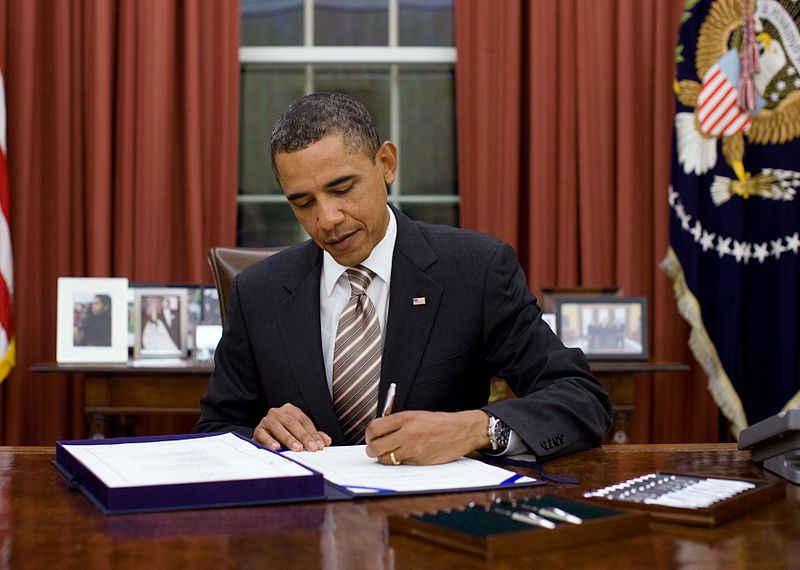
Any time changes happen, there is a temptation to be reactionary and reject them. I have found that by being more deliberate about helping students understand historical context, their engagement and understanding have improved significantly. Teachers always are fighting that battle between covering the content (which is daunting in an AP® course) and helping students understand the “so what?” question. Why does this matter to me? By making connections, students can see that history does not every happen in a vacuum. Our shared narrative is a series of events and ideas that continuously evolve and build off of each other. When students gain a firm understanding of how the past impacts their lives today, it makes learning way more meaningful and fun.
Contextualization is tough for students at first, but it is a skill application that can be perfected and improved to maximize your students’ chances of earning that point and rocking the AP® exam.
Looking for AP® US History practice?
Kickstart your AP® US History prep with Albert. Start your AP® exam prep today .
We also go over five-steps to writing effective FRQs for AP® US History in this video:

Ben Hubing is an educator at Greendale High School in Greendale, Wisconsin. Ben has taught AP® U.S. History and AP® U.S. Government and Politics for the last eight years and was a reader last year for the AP® U.S. History Short Answer. Ben earned his Bachelors degree at The University of Wisconsin-Madison and Masters degree at Cardinal Stritch University in Milwaukee, Wisconsin.
Interested in a school license?
4 thoughts on “ensuring your students earn the contextualization point on the dbq”.
great very helpful!
Glad it helped!
Very useful, thank you.
Glad it was helpful!
Comments are closed.
Popular Posts

AP® Score Calculators
Simulate how different MCQ and FRQ scores translate into AP® scores

AP® Review Guides
The ultimate review guides for AP® subjects to help you plan and structure your prep.

Core Subject Review Guides
Review the most important topics in Physics and Algebra 1 .

SAT® Score Calculator
See how scores on each section impacts your overall SAT® score


ACT® Score Calculator
See how scores on each section impacts your overall ACT® score

Grammar Review Hub
Comprehensive review of grammar skills

AP® Posters
Download updated posters summarizing the main topics and structure for each AP® exam.

Choose Your Test
- Search Blogs By Category
- College Admissions
- AP and IB Exams
- GPA and Coursework
Where to Find the Best DBQ Examples
Advanced Placement (AP)

One of the best ways to prepare for the DBQ (the "document-based question" on the AP European History, AP US History, and AP World History exams) is to look over sample questions and example essays. Doing this will help you to get a sense of what makes a good (and what makes a bad) DBQ response.
That said, not all DBQ essay examples are created equal. We'll briefly cover what makes a good DBQ example and then provide a list of example essays by course. Lastly, we'll give you some helpful tips on how to best use sample essays in your own preparation process.
What's a Good DBQ Example?
Without a doubt, the best sample resources come from the College Board . This is because they are the ones who design and administer the AP exams . This means the following:
Any DBQ essay example that the College Board provides will include a real DBQ prompt
All samples are real student responses from previous years , so you know they were written under the same conditions you'll have when you write your DBQ—in other words, they're authentic!
They not only have scores but also explanations of each essay's score , in accordance with the rubric
Each prompt includes several sample essays with a variety of scores
Some DBQ examples outside those available from the College Board might be worth looking at, particularly if they highlight how a particular essay could be improved. In general, though, a superior example will do the following:
Include the prompt and documents: It will be much easier for you to see how the information from the documents is integrated into the essay if you can actually look at the documents themselves!
Have a score: Seems simple, but you'd be surprised how many DBQ examples out there in the uncharted internet don't have one. Without a real, official score, it's hard to gauge how trustworthy a sample actually is.
With that in mind, I have compiled lists, organized by exam, of high-quality example DBQs below.

Don't spend all your study time on false starts with your practice DBQs.
Every DBQ Example Essay You Could Ever Need, by Exam
Here are your example essays! We'll start with AP US History, then move to AP European History, and finally wrap up with AP World History.
AP US History: Official College Board Examples
The APUSH test was redesigned in 2015 and again in 2018, so right now there are eight official College Board sets of sample essays you can use in your studies . Make sure to give yourself a 15-minute reading period and 45 minutes to write your answer. In addition, don't forget to use the current scoring guidelines when grading your own practice responses.
- 2023 Free-Response Questions | Scoring Guidelines 2023
- 2022 Free-Response Questions | Sample DBQ Responses 2022
- 2021 Free-Response Questions | Sample DBQ Responses 2021
- 2019 Free-Response Questions | Sample DBQ Responses 2019
- 2018 Free-Response Questions | Sample DBQ Responses 2018
- 2017 Free-Response Questions | Sample DBQ Responses 2017
- 2016 Free-Response Questions | Sample DBQ Responses 2016
- 2015 Free-Response Questions | Sample DBQ Responses 2015
If you want additional sample question sets, you can look at older College Board US History DBQ example response sets . To look at these, click "Free-Response Questions" for a given year. For the corresponding DBQ examples and scoring guidelines, click "Sample Responses Q1."
Note that these examples use the old rubric (which is integrated into the Scoring Guidelines for a given free-response section). General comments on the quality of the essay, outside information, and document analysis still apply, but the score is on a 9-point scale instead of the current 7-point scale, and some of the particulars will be different. Older DBQs had up to 12 documents, while the current format has seven documents.
If you do look at older DBQ examples, I recommend using the current rubric to re-grade the essays in the sample according to the 7-point scale. I'll also give more advice on how to use all these samples in your prep later on.

Mr. Bald Eagle is an AP US History DBQ grader in his spare time.
AP European History: Official College Board Examples
Unfortunately, there aren't as many sample resources for the AP Euro DBQ compared to the other AP history tests because 2016 was the first year the AP Euro test was administered in the new format . Since then, more minor changes have been made in terms of time (you now have an hour on the DBQ) and individual parts of the rubric (you can view the current scoring guidelines here ).
This means there are seven sets of official samples graded with the current 7-point rubric:
The rest of the existing available samples were graded in the old 9-point format instead of the 7-point format implemented in 2016.
In the old format, there were 6 "core" points and 3 additional points possible. The old rubric is integrated with the sample responses for each question, but we'll highlight some key differences between the old and current formats :
With the old format, you were given a brief "historical background" section before the documents
There were more documents—up to 12—but the current format has seven
There was an emphasis on "grouping" the documents that is not present in the current rubric
There was also explicit emphasis on correctly interpreting the documents that is not found in the current rubric
While the essential components of the DBQ are still the same between the two test formats, you should definitely refer to the current rubric if you decide to look at any old AP European History samples . You might find it useful to look at old essays and score them in accordance with the current rubric.
Here are the old sample DBQ questions and essays, organized by year:
- 2014 Free-Response Questions | Sample DBQ Responses 2014
- 2013 Free-Response Questions | Sample DBQ Responses 2013
- 2012 Free-Response Questions | Sample DBQ Responses 2012
- 2011 Free-Response Questions | Sample DBQ Responses 2011
You can get samples in the old format all the way back to 1999 from the College Board . (Click "Free -Response Questions" for the questions and "Sample Response Q1" for the samples.)

Consider how you might integrate this castle into the DBQ that is your life.
AP World History: Official College Board Examples
The World History AP exam transitioned to a new format to more closely resemble AP US History and AP European History for the 2017 test. This means that there are six past exams available that use the current DBQ format:
Note that starting with the 2020 exam, AP World History will only cover the years 1200 to the present instead of thousands of years of history. As a result, both the course and exam have been renamed AP World History: Modern (a World History: Ancient course is in the works). What this means for you is that previous DBQs might have to do with time periods you're no longer required to study, so just keep this in mind.
In the old format, there were 7 "core" points and 2 additional points possible. The old rubric is integrated with the sample responses for each question, but we'll highlight some key differences between the old and current formats :
There were more documents—up to 10—but the current format has seven
There was an emphasis on "grouping" the documents on the old rubric that is not present in the current rubric
- In the old rubric, you needed to identify one additional document that would aid in your analysis; the new rubric does not have this requirement
The essential components of the DBQ are still the same between the two formats, though you should definitely look at the current rubric if you study with any old AP World History questions and samples. You might find it useful to look at the old essays and score them according to the current rubric.
Here are old AP World History questions and DBQ sample responses , organized by year:
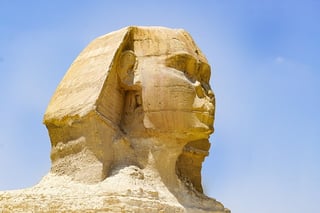
Don't worry, the old format isn't as old as this guy right here.
How Should I Use DBQ Examples to Prepare?
Now that you have all these examples, what should you do with them? In this section, we'll give you some tips on how to use example DBQs in your own AP history prep , including when to start using them and how many you should plan to review.
What Should I Do With These DBQs?
Official sample essay sets are a great way to test how well you understand the rubric. This is why we recommend that you grade a sample set early on in your study process—maybe even before you've written a practice DBQ .
Then, when you compare the scores you gave to the official scores and scoring notes given to the samples, you'll have a better idea of what parts of the rubric you don't really understand . If there are points you are consistently awarding differently than the graders, you’ll know those are skills you'll need to work on.
Keep giving points for the thesis and then finding out the sample didn't get those points? This tells you to work more on your thesis skills. Not giving points for historical context and then finding out the AP grader gave full credit? You need to work on recognizing what constitutes historical context according to the AP.
Check out my tips on building specific rubric-based skills in our guide on how to write a DBQ .
Once you've worked on some of those rubric skills you're weaker in, such as evaluating a good thesis or keeping track of how many documents were used, grade another sample set. This way you can see how your ability to grade the essays like an AP grader improves over time!
Obviously, grading sample exams is a much more difficult process if you're looking at examples in an old format. The old scores as awarded by the College Board will be helpful in establishing a ballpark —a 9 is still going to be a good essay using the current 7-point scale—but there may be some modest differences in grades between the two scales. (For example, maybe that perfect 9 is now more like a 6 out of 7 due to rubric changes.)
For practice grading with old samples, you might want to pull out two copies of the current rubric, recruit a trusted study buddy or academic advisor (or even two study buddies!), and have each of you re-grade the samples .
You can then discuss any major differences in the grades each of you awarded. Having multiple sets of eyes will help you determine whether the scores you're giving are reasonable, since you won’t have an official 7-point College Board score for comparison.

How Many Example DBQs Should I Be Using?
The answer to this question depends on your study plans.
If it's six months before the exam and you plan on transforming yourself into a hard diamond of DBQ excellence, you might do practice grading on a sample set every few weeks to a month to check your progress to being able to think like an AP grader. In this case, you would probably use six to nine official sample sets.
If, on the other hand, the exam is in a month and you're just trying to get in some extra skill-polishing, you might do a sample set every week to 10 days . It makes sense to check your skills more often when you have less time to study because you want to be sure that you are focusing your time on the skills that need the most work. For a short time frame, expect to use somewhere in the range of three to four official sample sets.
Either way, you should be integrating your sample essay grading with skills practice and doing some practice DBQ writing of your own .
Toward the end of your study time, you could even integrate DBQ writing practice with sample grading. Read and complete a timed prompt and then grade the sample set for that prompt, including yours! The other essays will help give you a sense of what score your essay might have received that year and any areas you might have overlooked.
There's no one-size-fits-all approach to using sample sets, but in general they are a useful tool for making sure you have a good idea what the DBQ graders will be looking for when you write your own DBQ on test day.

Hey, where can we find a good DBQ around here?
Closing Thoughts: Example DBQs for AP History Tests
Example DBQ essays are a valuable resource in your arsenal of study strategies for the AP history exams. Grading samples carefully will help you get a sense of your own blind spots so you'll know what skills to focus on in your prep.
That said, sample essays will be most useful when integrated with your own targeted skills prep . Grading 100 sample essays won't help you if you aren't practicing your skills; rather, you'll just keep making the same mistakes over and over again.
Make sure you aren't using sample essays to avoid writing practice DBQs either—you'll want to do at least a couple, even if you only have a month to practice.
And there you have it, folks. With this list of DBQ examples and tips on how to use them, you are all prepared to integrate samples into your study strategy!
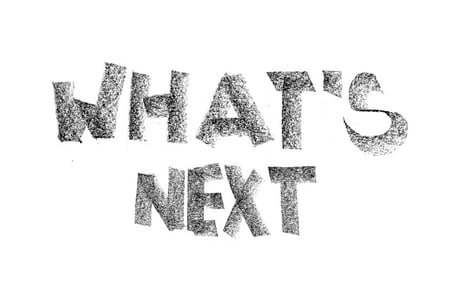
What's Next?
Still not sure what a DBQ is? Check out my explanation of the DBQ to learn the basics.
Want tips on how to really dig in and study for AP history tests? We've got a complete how-to guide on preparing for and writing the DBQ .
If you're still studying for AP World History, check out our top AP World History study guide , or get more practice tests from our complete list .
Want more study material for AP US History? Look into this article on the best notes to use for studying from one of our experts. Also, read our review of the best AP US History textbooks !

Trending Now
How to Get Into Harvard and the Ivy League
How to Get a Perfect 4.0 GPA
How to Write an Amazing College Essay
What Exactly Are Colleges Looking For?
ACT vs. SAT: Which Test Should You Take?
When should you take the SAT or ACT?
Get Your Free

Find Your Target SAT Score
Free Complete Official SAT Practice Tests
How to Get a Perfect SAT Score, by an Expert Full Scorer
Score 800 on SAT Math
Score 800 on SAT Reading and Writing
How to Improve Your Low SAT Score
Score 600 on SAT Math
Score 600 on SAT Reading and Writing
Find Your Target ACT Score
Complete Official Free ACT Practice Tests
How to Get a Perfect ACT Score, by a 36 Full Scorer
Get a 36 on ACT English
Get a 36 on ACT Math
Get a 36 on ACT Reading
Get a 36 on ACT Science
How to Improve Your Low ACT Score
Get a 24 on ACT English
Get a 24 on ACT Math
Get a 24 on ACT Reading
Get a 24 on ACT Science
Stay Informed
Get the latest articles and test prep tips!

Ellen has extensive education mentorship experience and is deeply committed to helping students succeed in all areas of life. She received a BA from Harvard in Folklore and Mythology and is currently pursuing graduate studies at Columbia University.
Ask a Question Below
Have any questions about this article or other topics? Ask below and we'll reply!

- AP Calculus
- AP Chemistry
- AP U.S. History
- AP World History
- Free AP Practice Questions
- AP Exam Prep
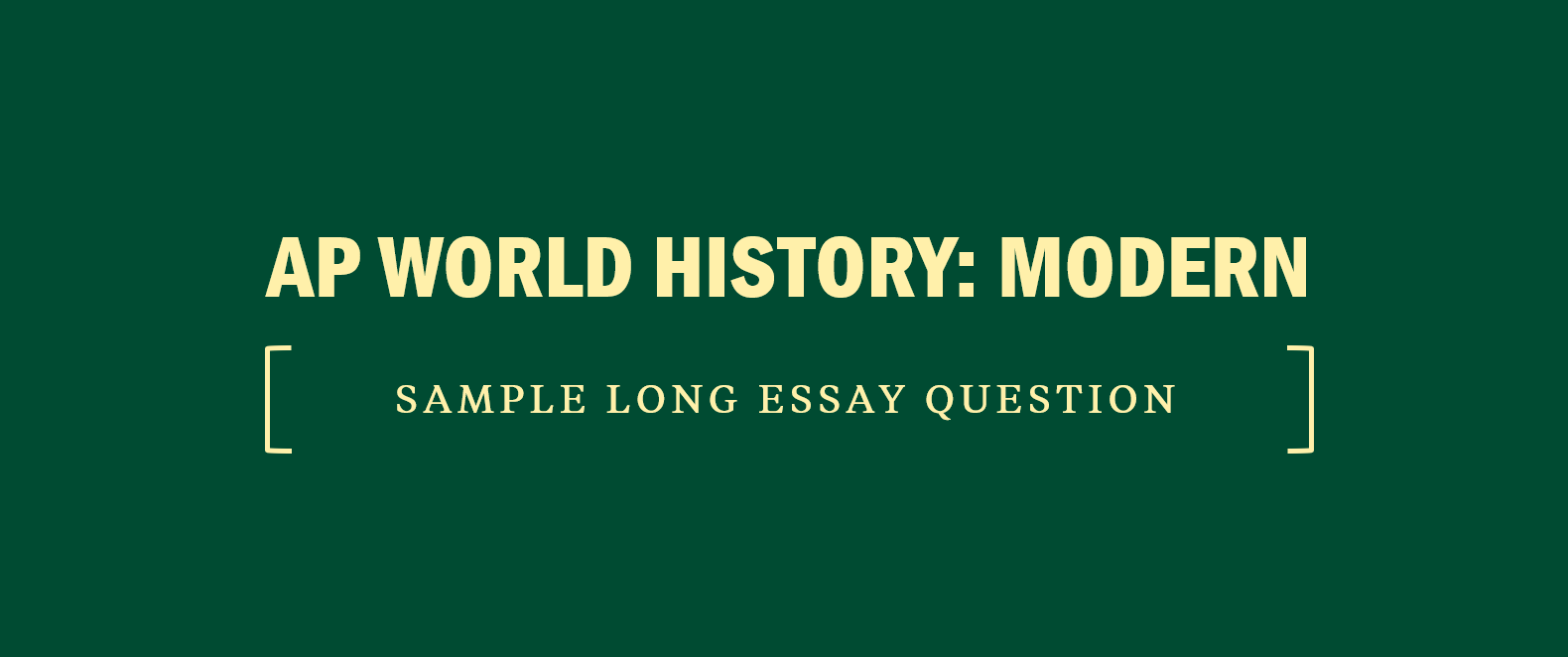
AP World History: Modern Sample Long Essay Question
In the period 1850 to 2001, new technologies emerged that had significant social, political, and economic effects. Develop an argument that evaluates the extent to which changes in the spread of ideas/information before and after World War I impacted societies.
Step 1: Analyze the Prompt
As you choose which question you will answer, begin thinking about what your thesis will entail and how your essay will demonstrate a complex understanding. The notes of a sample high- scoring writer are below. Note that the writer plans to develop a complex argument by addressing not only changes, as required by the prompt, but also continuities in societies before and after World War I.
Thesis : changes: faster spread of ideas made news, politics, and war more immersive and fast-paced; continuity: cross-cultural interactions transform all cultures (complex understanding, historical skill)
Step 2: Plan Your Response
- Context : Gutenberg → 2nd industrial revolution (steamship, train, telegraph) → digital revolution (radio, TV, Internet)
- Thesis : changes: faster spread of ideas made news, politics, and war more immersive and fast-paced; continuity: cross-cultural interactions transform all cultures ( complex understanding, historical skill )
- Evidence : War of 1812 versus WWII, Vietnam, Gulf War
- Evidence : American Revolution versus Cold War
- Evidence : language: Arab traders & Swahili, and modern business & English
- ¶ conclusion: impacts of tech on society have become more pervasive, though tendency towards cross-cultural influence has persisted
Step 3: Action! Write Your Response & Step 4: Proofread
Sample high-scoring response.
A key change between these eras of communication is how the speed of ideas’ dissemination impacts their force of impact and makes news more pervasive in civilians’ lives. In the distant past, the slow rate of communication caused reactions that were often months, or even years, after the initial communication. For instance, the final battle of the War of 1812 was fought after the signing of the war’s peace treaty because news had not yet traveled by ship across the Atlantic Ocean. In contrast, the peace treaties of WWII were celebrated in cities around the world mere minutes after news of their signing was shared by telegram and radio signals. The quick spread of images and video from the Vietnam conflict helped intensify Americans’ resistance to the war. In recent decades, 24-hour live coverage of conflicts, as in CNN’s being the first to provide constant coverage of a war during the Gulf War, allowed policy- makers and civilians to respond instantly to developments. As news became quicker, so its impact became more significant and more immediate.
Another change is that the quick and pervasive spread of ideas has made political conflicts more ideological and propaganda-based, further drawing societies into global disputes. Political rebellions of the eighteenth century, such as the American and French Revolutions, were based on Enlightenment ideals such as equality and representative government; they made use of propaganda in the form of printed political cartoons, tracts, and engravings to spread their ideals among the populace. However, the news communication made possible by radio and television after World War II helped propel the ideological conflict between the communist Soviet Union and the democratic United States into a worldwide phenomenon that intensely impacted both nations’ citizens. Technology was able to so effectively spread this war of ideas that the two major superpowers never engaged in direct battle themselves; still, citizens were drawn into a culture of propaganda that demonized the other side, made bomb shelters and bomb drills a part of daily life due to fear of nuclear warfare, and saw governments pour millions of dollars into the space race. Technology thus made it possible for conflicts to become all-immersive, even if they were based on ideas rather than physical confrontations.
Despite changes in communication, constants about its impacts remain. Cross- cultural communications still transform societies as they borrow and adapt ideas from others. For instance, from the eighth century onward, Arab traders who traveled throughout West Africa and along the eastern and northern coasts not only enriched communities economically but also spread Islam. Further, the necessity for communication among traders led to the rise of Swahili, a language that combined Arabic and African words and is still the lingua franca in much of East Africa today. Similarly, in modern times, as Britain and then the United States dominated world trade, English became a kind of worldwide lingua franca of modern business. Just as Arab traders spread their religion, American culture also diffused to other societies: almost every nation in modern times, for instance, built American-style fast food restaurants. Mirroring the trends related to the spread of news and politics, cultural diffusions in recent decades occurred at a faster rate and to a more pervasive extent than in the past. Whereas primarily traders would have adopted Swahili as it developed over generations, today English is taught in grade schools throughout the world.
Cultures that interact always influence each other. In the past century, how- ideas travel at a faster pace. As they have in ever, technology has made the impact of this spread of ideas more pervasive and significant as news and political the past, societies will continue to transform as they encounter ideas from other cultures, but with this increased intensity of communication, the impacts of ideas will continue to escalate.
You might also like
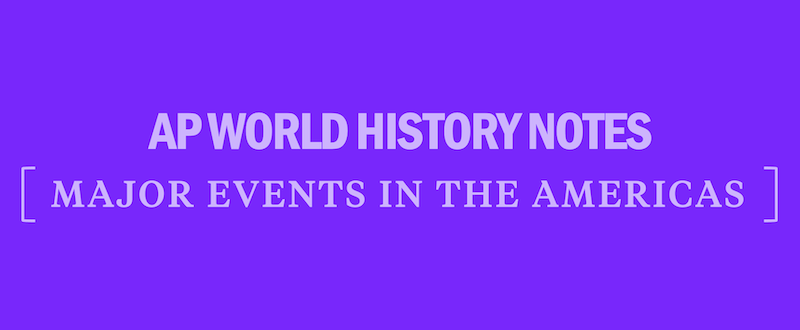
Call 1-800-KAP-TEST or email [email protected]
Prep for an Exam
MCAT Test Prep
LSAT Test Prep
GRE Test Prep
GMAT Test Prep
SAT Test Prep
ACT Test Prep
DAT Test Prep
NCLEX Test Prep
USMLE Test Prep
Courses by Location
NCLEX Locations
GRE Locations
SAT Locations
LSAT Locations
MCAT Locations
GMAT Locations
Useful Links
Kaplan Test Prep Contact Us Partner Solutions Work for Kaplan Terms and Conditions Privacy Policy CA Privacy Policy Trademark Directory

IMAGES
VIDEO
COMMENTS
Learn how to write a strong thesis statement for an AP World History DBQ by analyzing a sample question and seeing examples of effective and ineffective theses. Find out what makes a thesis specific, analytical, and persuasive, and how to use documents and outside information to support your argument.
If you're not sure how to write a DBQ thesis, check out this post for a failproof DBQ thesis formula and AP World History and APUSH DBQ thesis examples!
Resources from Heimler's History: To master all the WRITING SKILLS you need, get my ESSAY CRAM COURSE: +AP Essay CRAM Course (DBQ, LEQ, SAQ Help): https://bi...
How DBQs Work on the AP World History Exam. The DBQ format AP World History uses consists of a single open-ended prompt, and will focus on the time period of 1450-2001. Question Type. # of Questions. % of Total Score. Multiple Choice. 55 questions. 40%. Short Answer.
Start with 20 minutes for your outline and 50 for your essay, (or longer, if you need). Then when you can do it in 20 and 50, move back to 18 minutes and 45 for writing, then to 15 and 40. You absolutely can learn to manage your time effectively so that you can write a great DBQ in the time allotted.
The Document-Based Question (DBQ) asked students to evaluate the extent to which European imperialism had an impact on the economies of Africa and/or Asia. Responses were expected to address the time frame of the 19th through the early 20th centuries and to demonstrate the historical thinking skill of causation.
DBQ Practice is very important when preparing for the AP World exam. It is recommended to write a short brief outline of your argument before writing your body paragraph. Your task: In 20 minutes or less, read the documents and: Outline arguments you would make, using LESS than a full sentence for each. List, but DO NOT describe, evidence, both ...
There are always three specific types of essays, and each essay contributes one-sixth of your total Advanced Placement World History Exam score. Below you will find some ideas, suggestions, and recommendations to consider as you prepare to write. 1. Writing the AP World History DBQ. Though each question on this test is tied to a specific ...
Step 2: Plan Your Response. Next, take time to plan your response. Focus on formulating a strong thesis, and check your plan against the six DBQ requirements. See the sample plan that a high-scoring writer might make. Scoring requirements are written in bold for reference; note that the writer includes six of the seven documents and plans to ...
A Thesis. Make a thesis or claim that responds to the prompt. The thesis or claim must be based on historical facts and must establish a line of reasoning. ... AP World History: Modern DBQ Strategies. ... Feel free to write notes in the test booklet and underline important words in both the source lines and the documents themselves. Nothing in ...
he first part of the thesis statement.Basic Complex-split thesis formula:Although (oth. r example) , ultimately (claim responding to prompt specifying 3 examples).Once you get used to writing a complex-split in th. anner, you can tweak the wording - but for now, stick to this formula. Example: Evaluate the main causes of World War 1 Simple ...
Thesis Starters: Although, Despite, In spite of, During, Even though DBQ Essay: (#1 Essay on the AP Exam) Thesis: After analyzing the documents, (repeat key words from the prompt including the time period and list your three document groups) but make sure to specifically answer the question. Do not be vague! • DO NOT list documents in thesis.
AP® WORLD HISTORY 2018 SCORING GUIDELINES ©2018 The College Board Visit the College Board on the Web: www.collegeboard.org ... Thesis/Claim (0-1) Responds to the prompt with a historically defensible thesis/claim that establishes a line of reasoning. (1 point) To earn this point the thesis must make a claim that responds to the prompt rather ...
Flag every directive word or key phrase in the question prompt. 3. Plan out your response BEFORE you start writing. 4. Double check you've made explicit references to connections in your writing. 5. Practice, practice, and then practice some more. 37 AP® World History and Politics FRQ Tips to Scoring a 4 or 5.
You write a two-paragraph essay where the first paragraph is about comparison and the second is about contrast. If you were to take the first sentence from each paragraph and put them together, you might have a decent thesis. The readers are not allowed to do that. The thesis has to be a stand alone paragraph. -A non continuous thesis.
159.85 KB. Keep an eye on your time. Monitor your time carefully. Make sure not to spend too much time on any one question so that you have enough time to answer all of them. If you reach the end of the test with time to spare, go back and review your essays. And don't waste time restating the question in your answers: that won't earn points.
Resources from Heimler's History: To master all the WRITING SKILLS you need, get my ESSAY CRAM COURSE:+AP Essay CRAM Course (DBQ, LEQ, SAQ Help): https://bit...
During Step 1: Analyze the Prompt. Each long essay question begins with a general statement that provides context about the tested time period, and then the second sentence identifies your task, which will always entail developing an evaluative argument. Make sure to read all three prompts carefully. Think of the evidence you could use and the ...
AP World History: How to Write a Thesis Statement 1. Explain why your thesis statement is so important. The thesis establishes the line of reasoning. 2. Identify what the rubric says about an acceptable thesis. A thesis statement must responds to the prompt, doesn't restate or rephrase it, and is 1 or more
Use the documents and your knowledge of the years 1860-1877 to construct your response. This was the third DBQ we had written, and students were now getting brave enough to move beyond a thesis and document analysis and started attempting to tackle the contextualization point. However, the attempts were all over the map.
Tip 5: Practice Speed-Writing for the Free-Response Section. The AP World History exam has two essay questions that together account for 40% of your AP World History score. You'll get 60 minutes for the Document-Based Question, or DBQ, including a 15-minute reading period; the DBQ is worth 25% of your final grade.
Advanced Placement (AP) One of the best ways to prepare for the DBQ (the "document-based question" on the AP European History, AP US History, and AP World History exams) is to look over sample questions and example essays. Doing this will help you to get a sense of what makes a good (and what makes a bad) DBQ response.
Step 3: Action! Write Your Response & Step 4: Proofread. Use your plan to write each part of the response, and briskly skim for errors when finished. See the following high-scoring response, and be sure to read the rubric to help you identify what makes this response effective.